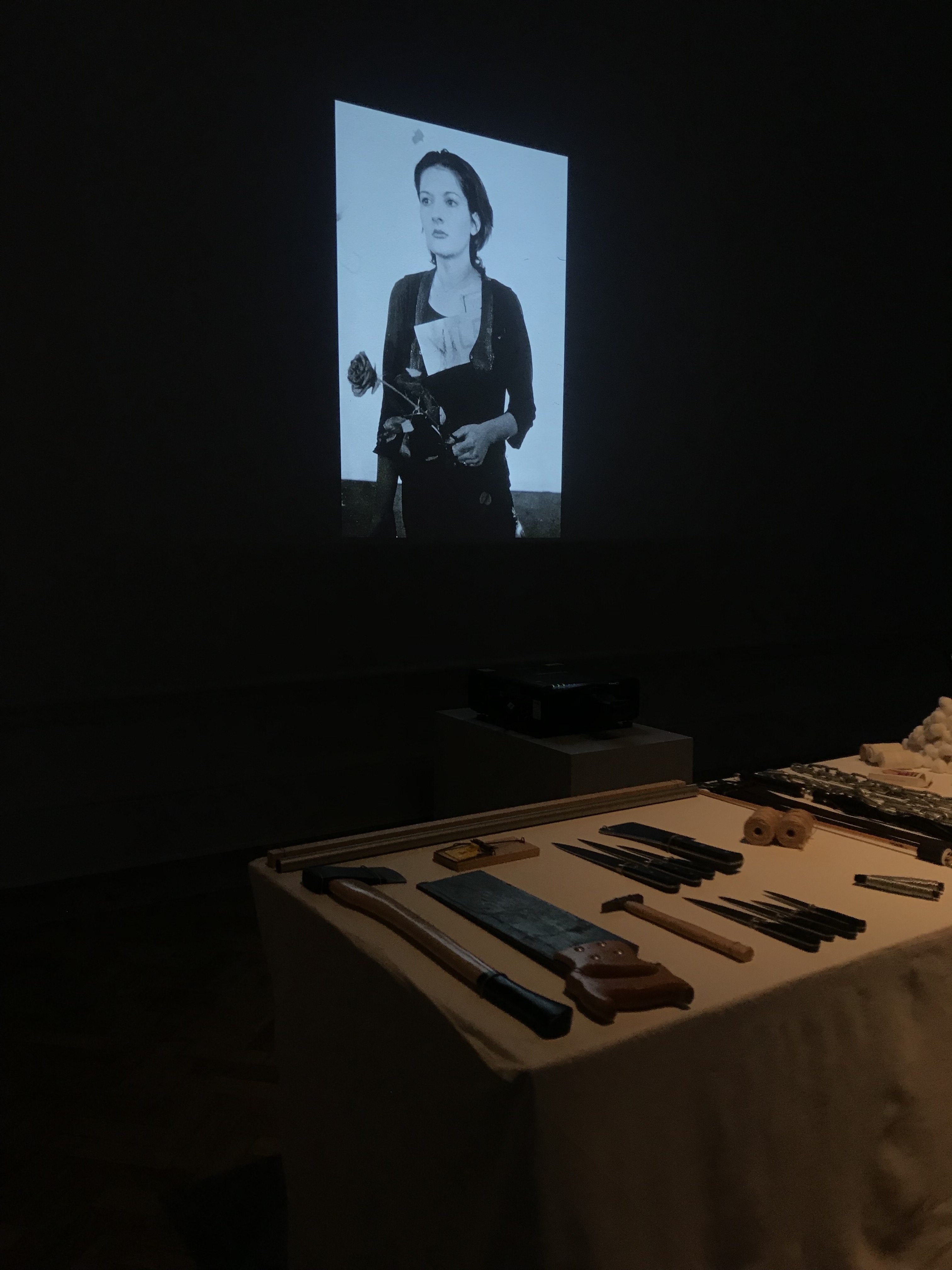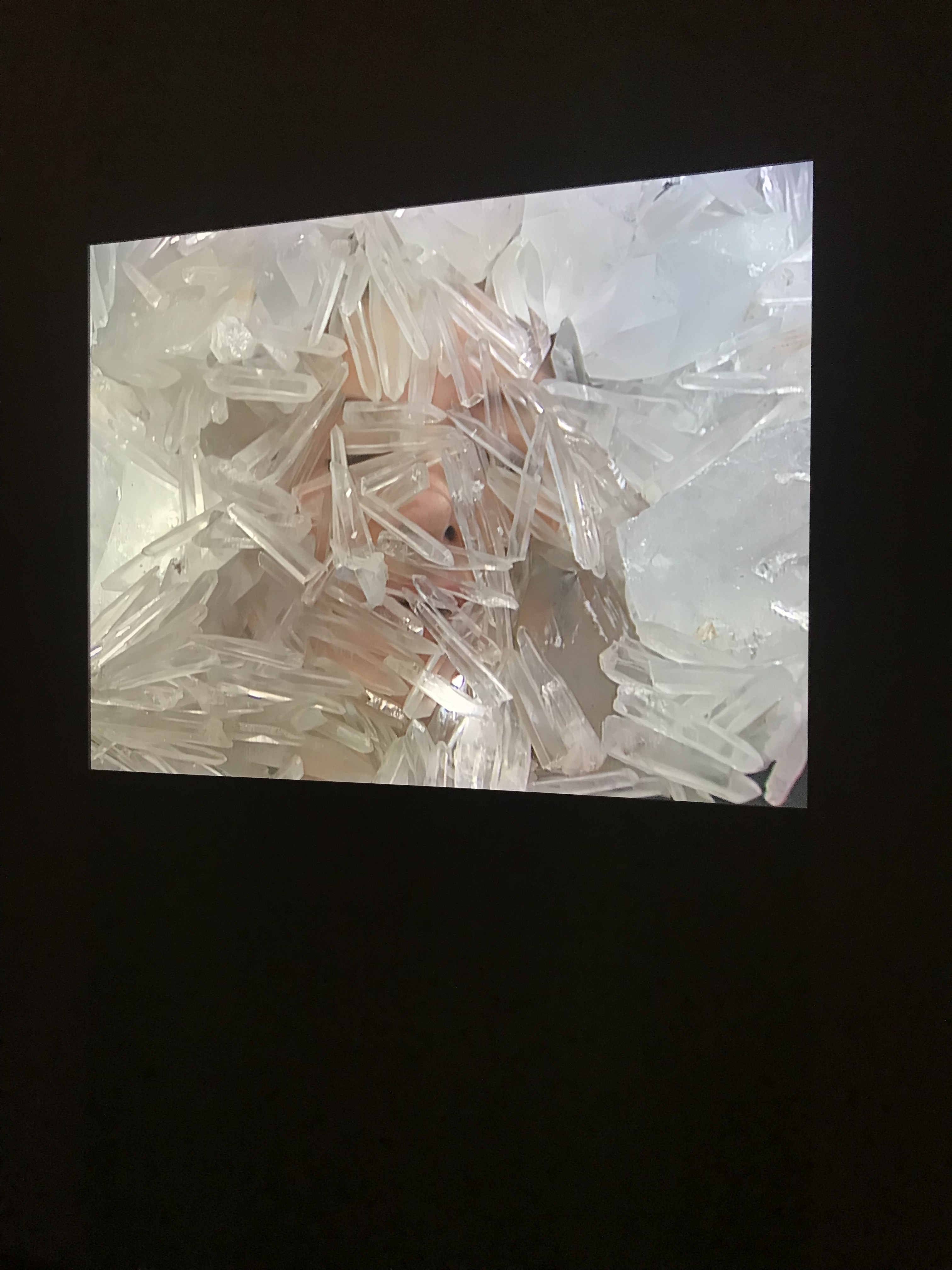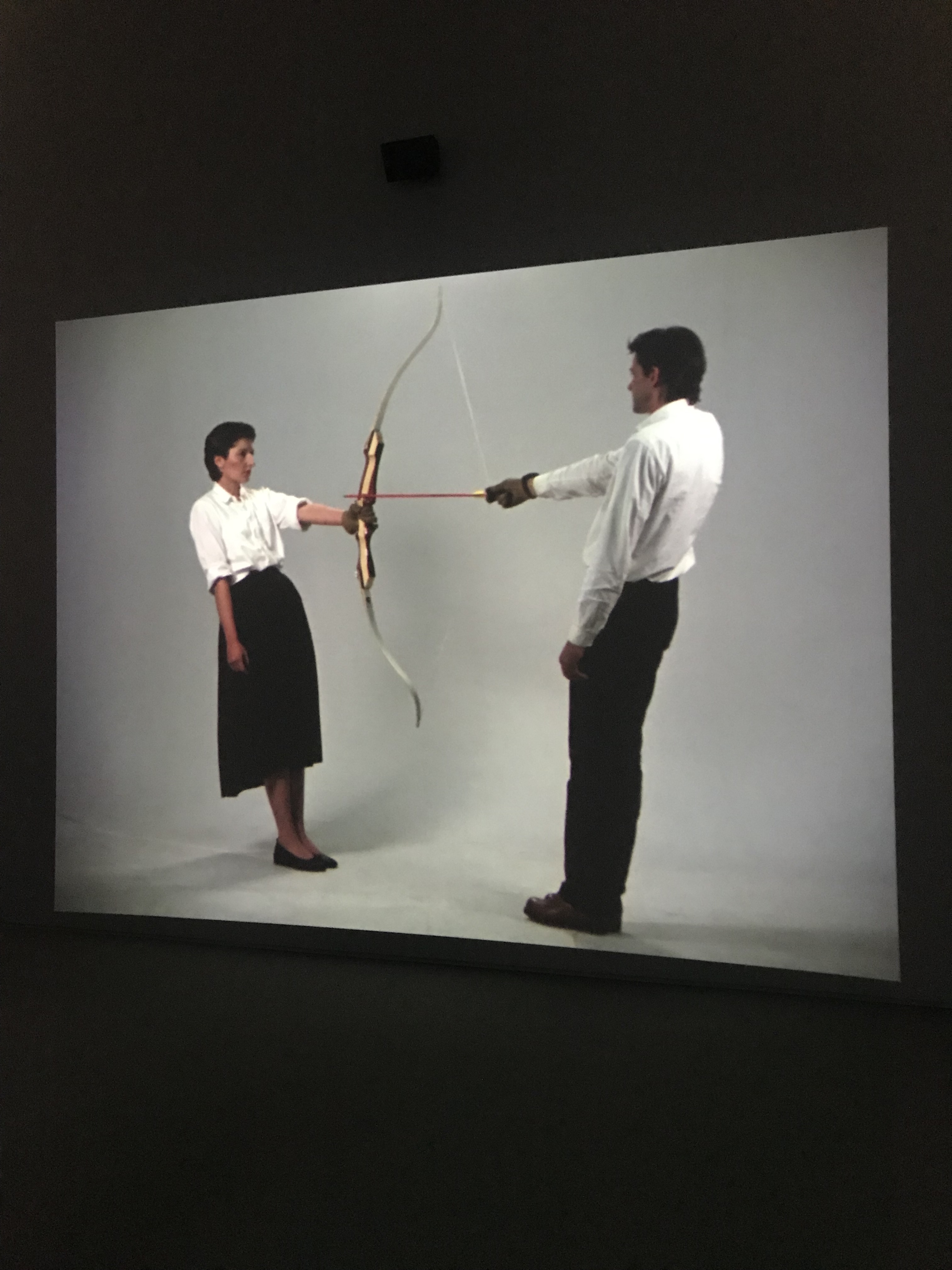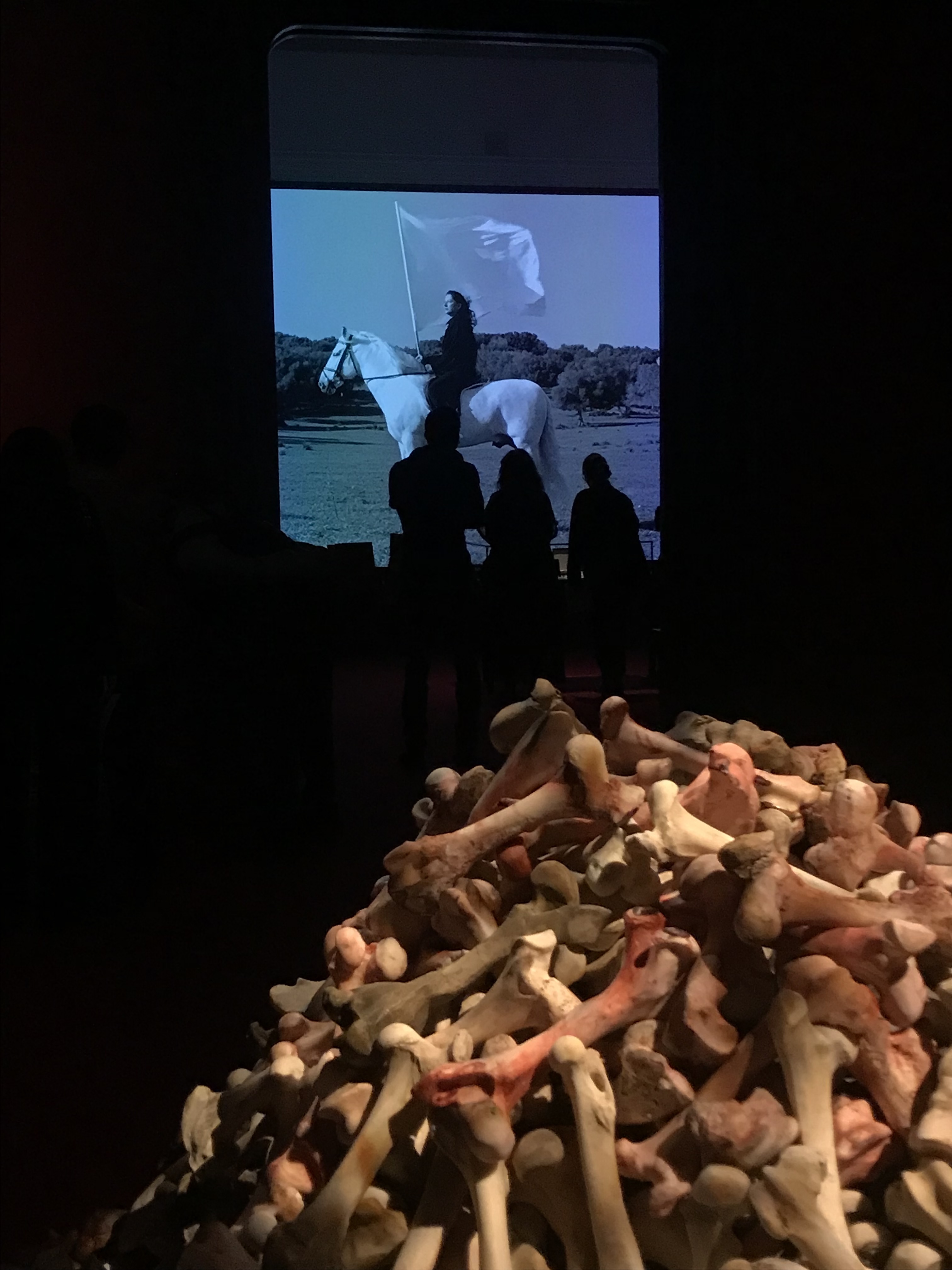Marina Abramovic
Royal Academy - Mayfair
23rd September - 1st January
By Estelle Simpson
Highlighting over 5 decades of significant performance art, the RA has just launched a retrospective dedicated to its first female artist, Marina Abromavic. Marina is an enlightening figure in the contemporary art world. She has demonstrated the power of commiting a lifetime to art in liberating oneself. She has freed her own body by creating light in dark places, and her work to date now centres on reaching a stage of ‘luminosity’ - emancipating the mind. In her own pursuit of this inhibition, she has also involved audiences to release their own restraints. What has stemmed from this practice is an extraordinary body of work which deeply explores the intrinsic nature of humanity.
I studied Marina’s work for an essay I wrote as a student in Leeds, so it was wonderful to immerse myself in her oeuvre a few years later in this retrospective. Her pioneering work introduced me to performance art practices with captivatingly distressing potency. As a painter and ballerina at the time, I was struck by the potential of this expressive form to utilise the body directly as the medium in a fine art context. Not only that, but Marina’s work appeared especially touching, closing the boundary between artist and observer, involving audiences at first hand through participation. From that moment on I was obsessed - her inspiring artistic voice is epitomised by formidable courage, anger, and heartbreak. Due to the temporal nature of her art, we are lucky her early works are captured on video, so that they can be watched nearly 5 decades on; the content is as vigorously evocative as it were at the time. Through both documentation and live recreations of seminal pieces, this exhibition honours the intrigue and complexity of Marina’s work to date.
The exhibition manages to trace the arc of Marina’s career from her very physical early ‘Rhythm’ pieces to the stillness of her ‘The Artist is Present’ performance. Upon entrance, a wall is filled by the many exhausted faces of the artist who sat for 75 days in the MoMA, and this is contrasted with the energised and charged emotions of each new sitter on the opposite side. Even though a plethora of videos uploaded to youtube capture the connection made between the artist and participants, presenting these shoulder to shoulder highlights the profound continuity of Marina’s fixed gaze and the vulnerability of the sitters. It also demonstrates the simplicity the artist has reached, placed in proximity to the ‘Rhythm 0’ piece, we see ‘The Artist is Present’ has completely removed the paraphanelia involved in her early work. Marina has reached a way to profoundly connect with audiences, achieved by the refined act of sitting.
When researching the artist, I was first captured by the disgrace she made of humanity, a depravity which was exposed in ‘Rhythm 0’. It was great to see the set table recreated alongside archival footage, facilitating a chance to observe each individual tool of pleasure and pain involved in the 1974 work. This allowed me to venture into the details of the six hour performance, providing a deeper appreciation of its construction. Over the 6 hour duration, audience’s actions escalated to a shocking degree of humiliation and abuse, played out onto Marina who declared herself a ‘passive object’ in this work. Chillingly, Marina allowed herself to be mutilated, stripped, and wounded. This is presented for us now in crude black and white photographs, projecting the horror around the gallery space. Marina bravely instructed the audience she took “full responsibility”, and this nerve led to the unruly turn the piece took, producing a disturbing reflection of the exploitation of women and power dynamics which exist in society. Still relevant today are the truths it exposed about human nature, authority, permission, and accountability. Perhaps, I thought, Marina’s braveness sought to release the deep anger and pain suppressed within the human condition, tapping in to a part of existence that very few feel or experience.
The Serbian performers rebellious nature and strong-minded attitude that is evident in her work can be considered a result of a brutal upbringing, a strict childhood dominated by religion from her grandmother, who partially raised her, and experience of the Communist state. In rooms titled the Communist Body, I am reminded after her potent ‘Rhythm 5’, performed at age 29, Marina had to return home by a 10 O’clock curfew. Despite the rebelliousness of this artwork, in which she lay in the centre of fire in protest, Marina still abode by the control present in her personal life. Astride a white stallion, a very motionless image of Marina - with the Yugoslav anthem playing in the background - is a not only a mournful tribute to her father, but also coincides with the ceasing in existence of the Communist state he had helped to create.
I loved reading the scripts which accompanied the works on show, revealing the precise instructions made by Marina. Of course, her ex-partner Ulay was a key asset of her artistic career at some point and shows up in the exhibition. He shared an interest in the involvement of the body in art. These collaborative artworks form part of the centrepiece of the exhibition , comprising of several screens. Snogging, slapping, screaming - facing each other, these performances on video seem to compete for my attention. It is stunning and fascinating to witness these works on this enlarged scale. As a crucial part of Marina’s practice being her presence when her works are realised in galleries, this is an example of the way the exhibition managed to employ technology to make up for her omission.
While praised for the authenticity involved in performance art’s liaison with the real and physical body, I love the sense of drama and extravagance which can be found within the practice. The artist’s work has involved fire and ice, dangerous props, intense emotional screams to impassioned embraces, as well as dangerous stunts, and freakish repetition. She tested her physical and psychological boundaries by lending herself unwittingly to her audience. This is a great survey of Marina’s risqué and raw artistry.
Undoubtedly courageous, delving into the heart of what it means to be human, Marina continues to create ritualistic performance pieces which are cathartic and liberating.








